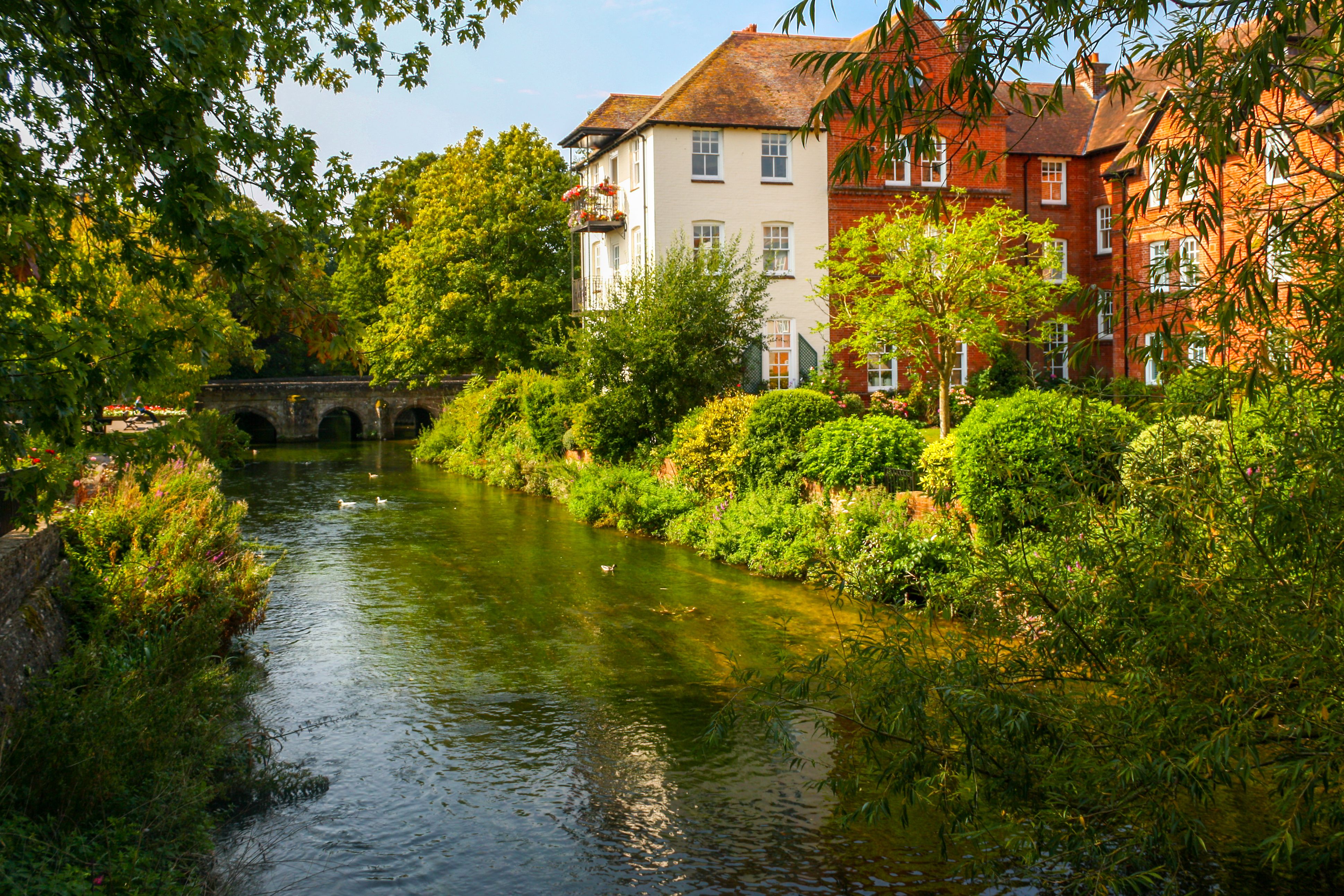
Mist surrounds Salisbury Cathedral as dawn breaks in Salisbury on October 10, 2018 in Wiltshire, England.Getty
Salisbury is home to some of Britain's oldest treasures and is well worth a visit
In the very old days, there was Old Sarum, a fortress on a hill, with a cathedral and castle. Church and state feuded for years, and in 1220 Bishop Richard Poore won permission to relocate the cathedral a few miles away, down in the river valley. Within a generation, the cathedral was largely complete, and, not surprisingly, the town followed the bustling ecclesiastical community is maintained. The result is the most complete 13th-century cathedral in England and a precinct of medieval streets and alleys. Today, Salisbury is a contemporary, friendly provincial city of 40,000, full of good hotels and easy to navigate on foot.
Read more

Stone bridge over the Avon River in Salisbury, UK
Getting to Salisbury
To the southwest of London, and the only cathedral city in Wiltshire, by car Salisbury, is a short two hours from the capital (less from the airports), most directly via the M4, the A303, and the A338. By train, Salisbury is an hour or so from London Waterloo on the Exeter line. Salisbury is also midpoint on the major rail line running between Bath and Bristol and Portsmouth Harbour.
Why visit Salisbury
Dramatic Salisbury Cathedral has the tallest spire in England, at 404 feet. It also has the earliest surviving choir stalls in Britain (1236), and the oldest mechanical working clock in the world (1386). The medieval cloisters are the largest in Britain. Its Chapter House, built in 1260, displays the best preserved of the four surviving copies of Magna Carta sealed by King John in 1215.
Outside, the 13th-century cathedral is surrounded by the largest (and one of the prettiest) Cathedral Closes in the country. Visible down the soaring nave, the majestic royal blue stained-glass window beyond the quire commemorates prisoners of conscience throughout the world. Return later in the afternoon for the unforgettable experience of Choral Evensong.
Where to stay
Salisbury is blessed with a number of fine, moderate three-star hotels in a good location for exploring the city. The Red Lion on Milford Street may be the oldest continually operating hotel in England. The Cathedral Hotel is right across the street. There is also the White Hart, Milford Hall and, across medieval Harnham Bridge and the pastoral water meadows is the Rose & Crown.
Salisbury Cathedral
Built for the stonemasons working on Salisbury Cathedral, the Church of St. Thomas Becket in the heart of the city has been the parish church for centuries. The best known of many interesting features in the Gothic church is a rare medieval wall mural depicting the Last Judgment.

Exterior of Salisbury Cathedral
Mompesson House in the Close is considered a perfect example of Queen Anne architecture, with magnificent plasterwork and fine 18th-century furnishings. The National Trust property includes a charming walled garden and garden tearoom.
Just down the lane in the Close is the Salisbury and South Wiltshire Museum. The local history museum contains an eclectic mix of exhibits covering 2,000 years of local lore—including an award-winning Stonehenge Gallery and J.M.W. Turner watercolors, and archaeology collections of national importance.
On Tuesdays and Saturdays, the vibrant market in Market Square has been ongoing since 1227. The 15th-century Poultry Cross is the sole remaining of three medieval market crosses that once marked the square’s major commodity markets.
Sitting in the largest cathedral close in Britain, Salisbury’s spire stretches 404 feet.[/caption]
Salisbury’s secret
If time permits, do take a stroll on the town path next to the Queen Elizabeth Gardens across the Water Meadows to the Old Mill on the River Naddar. These are the views, of grazing cattle in fertile pasture with Salisbury Cathedral’s spire in the background, which inspired one of John Constable’s most famous series of paintings. The idyllic scene at the Old Mill is great, too.
For reviving food and drink
Look next door. With a heritage as an army town, Salisbury has more pubs per capita than most places. Restaurants of many descriptions line city center streets. The Market Inn is a great gastropub popular with locals. The Cloisters and the pretty Ox-Bow Inn are atmospheric 16th-century pubs worth a visit. But even Wagamama has come to Salisbury, and there are well-regarded Thai restaurants along with first-class hotel dining rooms.
Along the way
With its compact, easily navigated city center and well-situated hotels, Salisbury is a good base for exploring nearby. A few miles north of Salisbury Plain are the ruins of Old Sarum and the new visitor center at considerably older Stonehenge. Busses are available from the station in Salisbury.

Walls of ancient Roman hill fort of Old Sarum outside Salisbury, UK
Just west is historic Wilton House, the seat of the Earl of Pembroke, and renowned for its Inigo Jones interiors. Near Mere, the 18th-century landscape gardens of Stour-head have been known for years as the “Flagship of the National Trust” and may indeed be the finest in the existence.
* Originally published in May 2014.





Comments